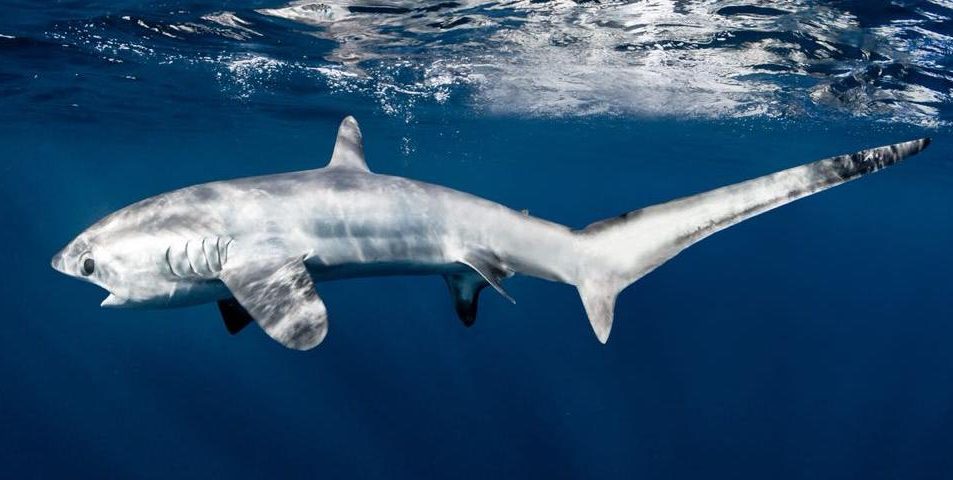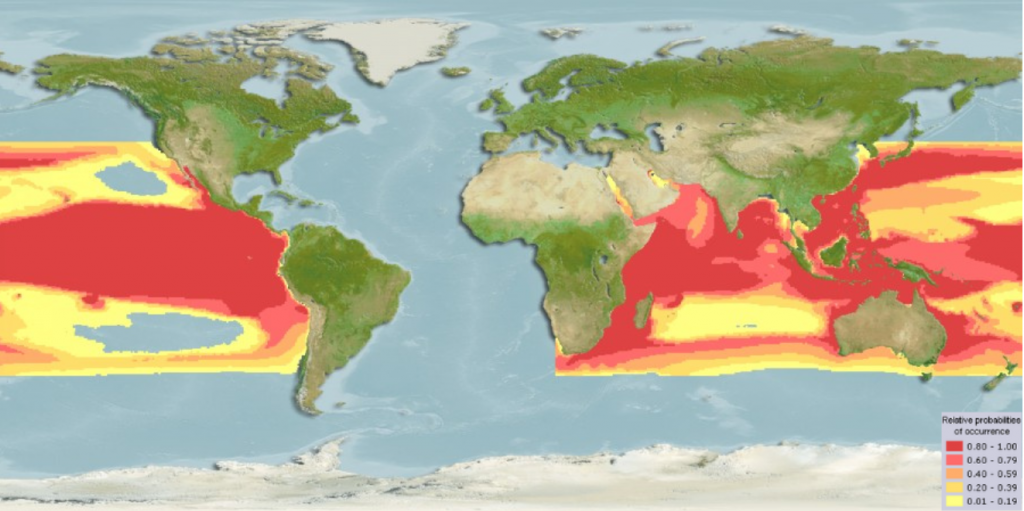
Protecting endangered Thresher Shark (Alopias pelagicus) whilst providing alternative livelihood for shark-dependent communities in Alor.

Have you ever heard about this majestic looking shark? Look how beautiful the long tail fin is. The Pelagic Thresher Shark (Alopias pelagicus) or in Indonesia known as “Hiu Tikus” (Mouse Sharks) is the smallest species (3.3 m) out of the 3 other species in the family of Alopiidae and can be identified with its distinctive features such as its long caudal fin, large pectoral fins, small mouth & big eye.
This beautiful species live in open waters and can swim up to 450 m in depth, they usually hunt for food on shallow waters at night by whipping their long tail to shock preys. Unfortunately, this species is listed in IUCN Red List as an Endangered (EN) species where the population declined by 80% for the past 10 years in Indonesia.

Thresher Shark is known as a circumglobal species just like the Manta Ray, it can be found across the globe. There are 3 species of Thresher Sharks, the first one is Common Thresher Shark (Alopias vulpinus), this species can be found in sub-tropical waters and Atlantic ocean, the second one is the Bigeye Thresher Shark (Alopias superciliosus), this species is the biggest in sizes compare to the other three and the last one is the Pelagic Thresher Shark (Alopias pelagicus), both Bigeye and Pelagic Thresher can be found in Indo-Pacific waters. The distribution of Pelagic Thresher Shark in Indonesia is widespread across the national waters, as shown on this map.

The relative probabilities of occurence is represent as red and yellow color. Red indicates more chance of Pelagic Thresher sighting and yellow is the vice versa. As we zoom in to Indonesia, we can see the color red is concentrated that indicates more chance of sighting, especially in the eastern waters of Indonesia, where most of marine biodiversity of the country’s located. Sadly, Indonesia is considered as the largest shark fishing nation with shark catches averages around 100,000 tons per year. [Click here to continue reading]